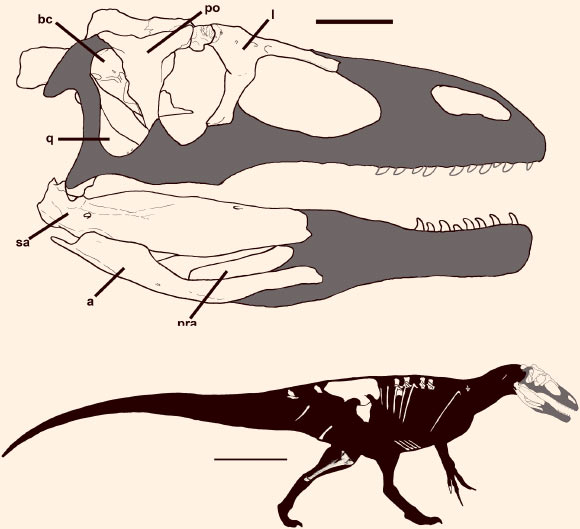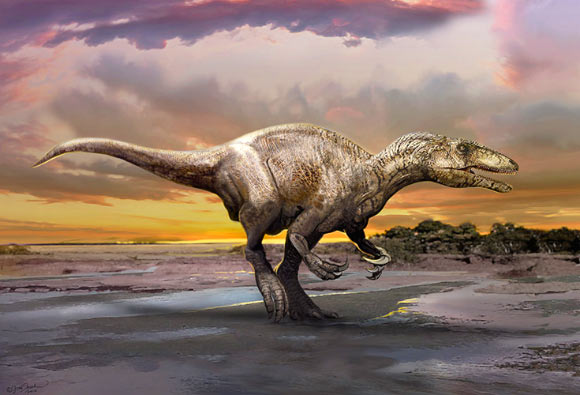A new species of theropod dinosaur has been discovered by a duo of paleontologists – Prof. Philip Currie from the University of Alberta in Canada and Dr. Rodolfo Coria from the Consejo Nacional de Investigaciones Científicas y Técnicas in Argentina.
The new dinosaur, named Murusraptor barrosaensis, is thought to have lived about 87 million years ago (Upper Cretaceous epoch).
It belongs to Megaraptoridae (giant thieves), an enigmatic group of medium-sized predatory dinosaurs, infamous for hypertrophied claws and air-filled, birdlike bones.
The partial skeleton of Murusraptor barrosaensis was discovered in Sierra Barrosa, in northwest Patagonia.
This specimen appears to be immature, but the paleontologists suggest that the species is larger and slenderer than Megaraptor and comparable in size with Aerosteon and Orkoraptor.
“This animal, not yet an adult, was roughly 26 feet (8 m) long when alive – and was still growing,” Prof. Currie said.
“This is a super-cool specimen from a very enigmatic family of big dinosaurs,” he added.
“Because we have most of the skeleton in a single entity, it really helps consolidate their relationships to other animals.”
The finding represents one of the most complete megaraptorid dinosaurs ever found, with an unusually intact braincase.
“It’s the only known braincase material we have of any megaraptor,” Prof. Currie said.

Top: skull reconstruction of Murusraptor barrosaensis. Scale bar – 10 cm. Bottom: body reconstruction of Murusraptor barrosaensis. Scale bar – 1 m. Both illustrations show recovered elements in white. Image credit: R.A. Coria & P.J. Currie.
“Although incomplete, the beautifully preserved bones of Murusraptor barrosaensis unveil unknown information about the skeletal anatomy of megaraptors,” Dr. Coria said.
While sharing many features with the other species, the new species has distinctive facial features not previously seen amongst megaraptorids, as well as unusually shaped hip bones.
“While phylogenetic analysis could not clearly determine evolutionary relationships, these fossils provide new anatomical information which might help to resolve current debates as to whether the megaraptorids are a clade of the allosauroid or the coelurosaurid theropods,” the scientists said.
The discovery is reported July 20 in the journal PLoS ONE.
_____
R.A. Coria & P.J. Currie. 2016. A New Megaraptoran Dinosaur (Dinosauria, Theropoda, Megaraptoridae) from the Late Cretaceous of Patagonia. PLoS ONE 11 (7): e0157973; doi: 10.1371/journal.pone.0157973








